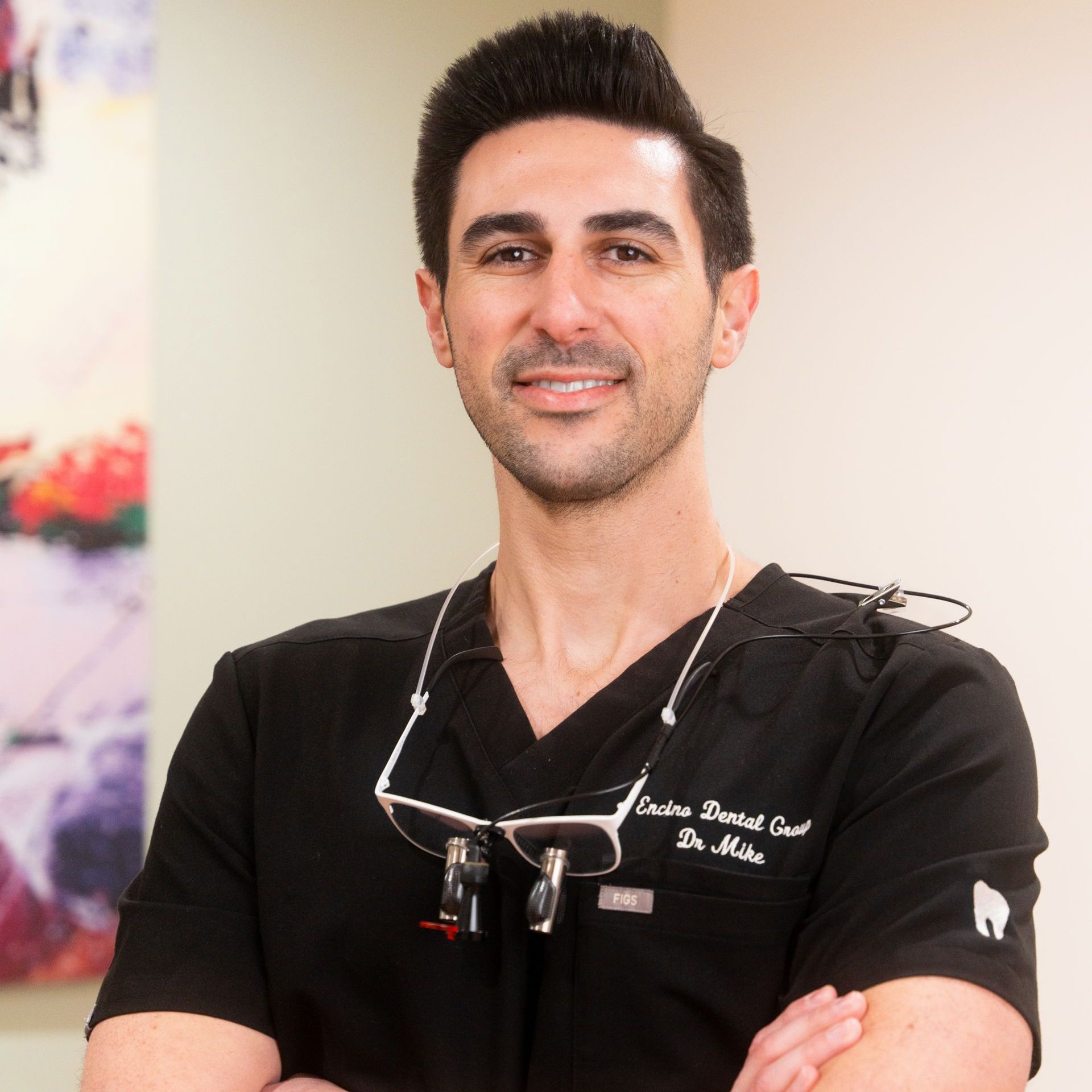Osseous Surgery In Encino, CA
Periodontal disease is a serious condition that can affect your gums, teeth, and supporting structures. It can cause bone loss and create deep pockets of gum tissue. Osseous Surgery, or flap surgery, is designed to treat periodontal disease. It involves reshaping bone and reducing pockets of gum. At
Encino Dental Practice, Dr. Mike Mamaliger provides expert osseous surgeries to help patients improve their gum health and stop the progression of
periodontal diseases. This page provides an in-depth overview of osseous surgery. It will cover the conditions that it treats, as well as its benefits and what to expect during and following the procedure.
What is Osseous Surgery?
The osseous surgery is part of a periodontal treatment that involves reshaping bone around teeth and reducing the deep pockets formed by periodontal diseases. As gum disease advances, bacteria can cause the gums to pull away from teeth. This creates pockets that can harbor more bacteria, leading to further infection. The bone that supports teeth can become damaged over time, increasing the risk of tooth decay and making it harder to maintain good oral hygiene.
Dr. Mamaliger performs osseous surgery in order to remove these pockets of infection, reshape and smooth the bone, and reconnect the gums to the teeth. This procedure not only stops the progression of periodontal diseases but also helps patients maintain good oral hygiene.
What is the Relationship Between Periodontal Disease and Bone Damage?
Plaque and tartar buildup on teeth and gums can cause periodontal disease. Untreated, it can lead to gum tissue destruction, inflammation, and infection. As the disease advances, the infection may spread below the gum line and erode bone-supporting teeth. Deep pockets that form between gums and teeth can create an environment for bacteria to thrive. This makes it difficult to remove these areas by brushing or flossing.
Periodontal disease can lead to significant bone loss and gum recession if it is not treated. When other treatments, such as root planing and scaling, are not enough to control the disease, osseous surgery may be recommended.
When is Osseous Surgery Required?
Patients with severe gum disease and deep pockets of gum tissue who cannot be treated non-surgically are often recommended osseous surgery. Dr. Mamaliger might recommend osseous surgical treatment if you:
- Gum Pockets: These are deep and persistent even after deep cleaning, such as root planning or scaling.
- Bone Loss: If bone loss around your teeth has occurred, it is hard to keep that area free from bacteria.
- The Gums are Pulling Away: Gum recession creates pockets, which harbor bacteria.
- Other Treatment: Other treatments have not been effective in controlling the progression of periodontal disease.
Osseous surgery helps restore gum health by removing bacteria and smoothing the bones. It also reduces the size of the gum pockets.
The Osseous Surgery Procedure
Encino Dental Practice offers osseous surgery that is patient-focused and well-structured. It provides effective results and ensures comfort throughout treatment. This is a step-by-step guide to the osseous surgical procedure:
Osseous Surgery: Benefits
Patients with advanced periodontal diseases can benefit from osseous surgery. Encino Dental Practice and Dr. Mamaliger are committed to providing patients with the best possible care. They help them improve their gum health as well as their overall oral function. Here are some of the main benefits that osseous surgery can provide:
New Patient Special
$75 offER
Limited Exam and one X-ray
LIMITED-TIME OFFER
Recovery and Aftercare
After osseous surgery, it is important to follow the right aftercare instructions. Dr. Mamaliger will give you specific instructions on how to care for your gums as they heal. Following the procedure, here are some general guidelines to follow:
- Eat Soft Foods: Avoid causing irritation to the treated area by eating soups, yogurt, and mashed potato for the first couple of days following surgery.
- Avoid Alcohol and Smoking: Alcohol and smoking can slow the healing process. It's best to avoid them for a minimum of a week following the procedure.
- Maintain Oral Hygiene: It is important to maintain good oral hygiene, but you will need to be gentle while brushing or flossing the area that has been treated. Dr. Mamaliger might recommend a mouthwash that is designed to kill bacteria during the recovery period.
- Attend Follow-up Appointments: It is important to attend regular follow-up appointments to monitor healing and make sure that your gums have been reattached properly.
Why Choose Encino Dental Practice Osseous Surgery?
Dr. Mamaliger, at Encino Dental Practice is dedicated to providing outstanding periodontal treatment with a patient-centered focus. Dr. Mamaliger has years of experience treating gum disease and performing surgery. He ensures each patient receives personalized treatment tailored to their needs.



